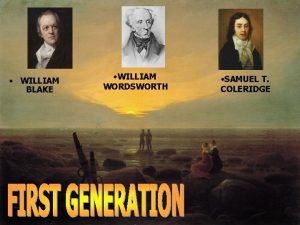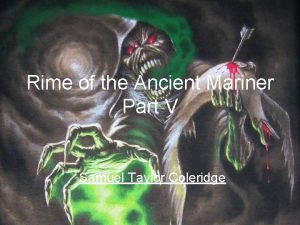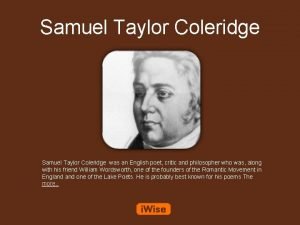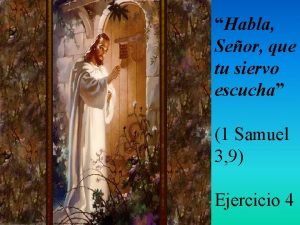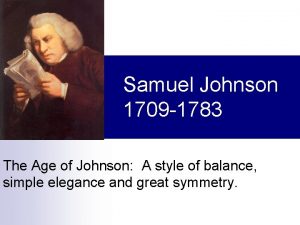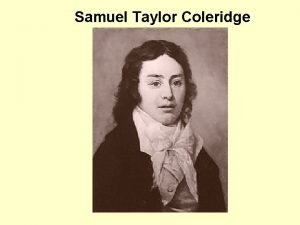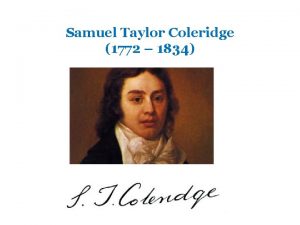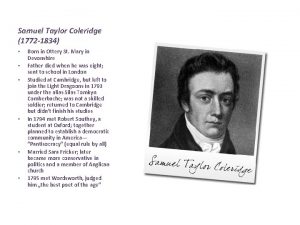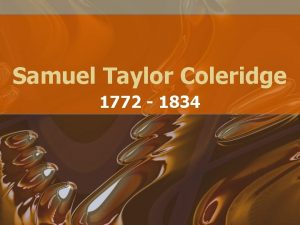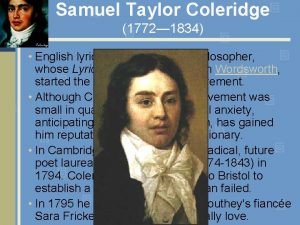SAMUEL TAYLOR COLERIDGE 1772 1834 Like Wordsworth Coleridge









- Slides: 9

SAMUEL TAYLOR COLERIDGE 1772 -1834

• Like Wordsworth, Coleridge was influenced by revolutionary ideals. • He lived with Wordsworth and his sister in the Lake District. In 1798, Coleridge and Wordsworth published a collection of poems – Lyrical Ballads. • Following a serious quarrel with Wordsworth, Coleridge moved to London in 1810.

• Like Blake and Wordsworth, Coleridge attached great importance to the role of the imagination. • Like Wordsworth, Coleridge believed strongly in the importance of nature although he did not view it as a moral teacher. • He was interested in the exotic (“Kubla Khan”), and the medieval period (“Christabel”). • In contrast to Wordsworth’s preoccupation with subjects from ordinary life, Coleridge’s task was to write about extraordinary events in a credible way. • He emphasized dramatic truth and the suspension of disbelief which constitutes poetic faith.

• “The Rime of the Ancient Mariner” mingles the mysterious and magical with realism, and it displays Coleridge’s original aims in his poetry.

Written in the form of medieval verse tale and published as part of the Lyrical Ballads in 1798, “The Rime of the Ancient Mariner” is made up of seven parts. The first part of the poem portrays the ancient mariner who stops a wedding guest outside a church to tell his dreadful tale. When he and his fellow mariners reached the equator, they were blown by a violent storm towards the polar regions. After several days trapped in the ice an albatross appeared through the fog. The mariners viewed the albatross as a “Christian soul”, and they fed it. Following this, their fortunes changed – a south wing blew up and their ship started moving back in the direction of the equator.

At this point, the ancient mariner, for some inexplicable reason, shoots the albatross with his bow. The second part of the poem, which we will read, describes the incidents following the ancient mariner’s crime. The remaining parts of the poem deal with what happens to the mariners during the rest of the voyage.

The ancient mariner is the only survivor of the disasters. As a punishment, he is compelled to wander the world forever telling his story and conveying the moral message of the poem: one does not have the right to destroy any of God’s creatures.

The combination of the supernatural and the ordinary creates an atmosphere of mystery in the poem. The poem illustrates Coleridge’s idea of the dramatic truth and the suspension of disbelief.

Many features of ballads can be seen in this poem: • • • . The combination of dialogue and narration The four-line stanza Frequent repetition Alliteration Internal rhyme
